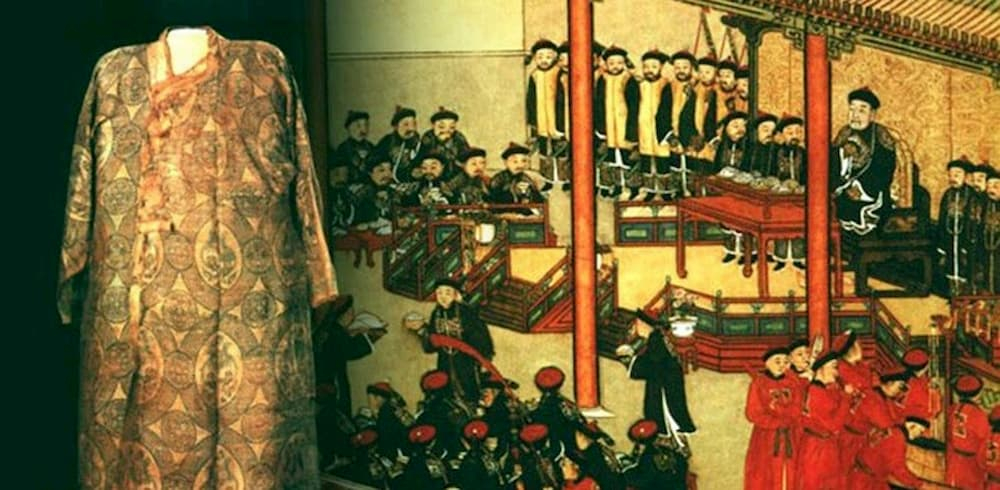
Clothing in Ancient China
Splendid
Chi Culture
Topic
Clothing in Ancient China
The origin of Chinese clothing goes back to remote antiquity. Archaeological discoveries have shown that from the late Paleolithic to the early Neolithic periods, the Upper Cave hominids who lived at Zhoukoudian in Beijing (ca. 18,000 years BP) used bone needles. These discoveries indicate that humans could make clothing by sewing animal skins together. The invention of clothes-making tools, such as bone needles and awls, significantly advanced the development of clothing, and provided better conditions for human survival against nature. The raw materials suitable for clothing expanded with the use of plant fibers which could be woven into fabrics. Later, burlap or linen fabrics emerged and were widely used; archaeologists regard these as the origin of everyday fabric.
Over the long course of China’s history, clothing styles have been influenced by various ethnic groups; however, individual styles were also preserved.
The emergence of dyeing and weaving marked the beginning of civilization. During the matriarchal era (ca. late Paleolithic period) of Chinese society, the weaving of fibers such as hemp/linen and kudzu (Pueraria lobate) was mastered. Plain tabby silk (juan) with thunder patterns (leiwen) has been excavated from Shang dynasty (ca. 1600–ca. 1100 BCE) sites. Sericulture further increased the number of fabrics available during this time. The progress enjoyed by the handcraft and textile industries allowed the production of a great variety of beautiful and elegant clothing. Beginning in the Shang dynasty, the basic format of Chinese clothing consisted of an upper (yi) and a lower (shang) garment. This style persisted through later dynasties and was eventually supplemented by hats, crowns, various hair styles, and shoes.
China has fifty-six ethnic groups within its borders. Characteristics—political, economic, cultural, aesthetic, religious, and social—from each of these groups are reflected in their clothing. Taking a bird’s-eye perspective of five-thousand years of Chinese clothing history, one can see that these elements are integrated despite the ever-changing styles, designs, colors, fabrics, and so on. Ethnic groups learned from one another through blending their designs to create many beautiful and exquisite clothes.
Chinese clothing is known for its bright colors, exquisite craftsmanship, and unique styles. The attire and the style of each ethnic group are different and these differences are reflected in their everyday apparel, customs, and taboos. In general, the attire of the Han ethnic group meticulously reflects the traditional ritual code; ethnic groups in the north show a simple and vigorous style, powerful and coarse; ethnic groups in the northwest are unrestrained, simple, unadorned, dignified, and frugal; and ethnic groups in the southwest make clothes that are beautiful and varied, rich and colorful. The characteristics of each ethnic group’s geographical environment, customs, production methods, and artistic traditions are embodied in their attire and adornment.
Literature, fine arts, drama, and other creative endeavors express an aesthetic sense. Among the many types of arts and crafts, clothing and accessories are the most expressive media with which to emphasize a social aesthetic sense (for example, clothes that are tie-dyed, hand-painted, embroidered, or woven). In contrast, attired figural representations in painting, sculpture, and other arts and crafts also occupy an important position. Thus, art and attire form a bond born from mutual development.
As society develops and productivity improves, clothing fulfils other functions in addition to practical needs; for example, it carries more symbolic significance. Mozi (ca. 468–376 BCE) once said that “As for clothing, it is not for the body, but is to be pleasing to the eye.” In other words, clothing is not completely for the sake of covering up the body, it has a deeper meaning. The history of clothing development also gives a side view into the history of human civilization.



